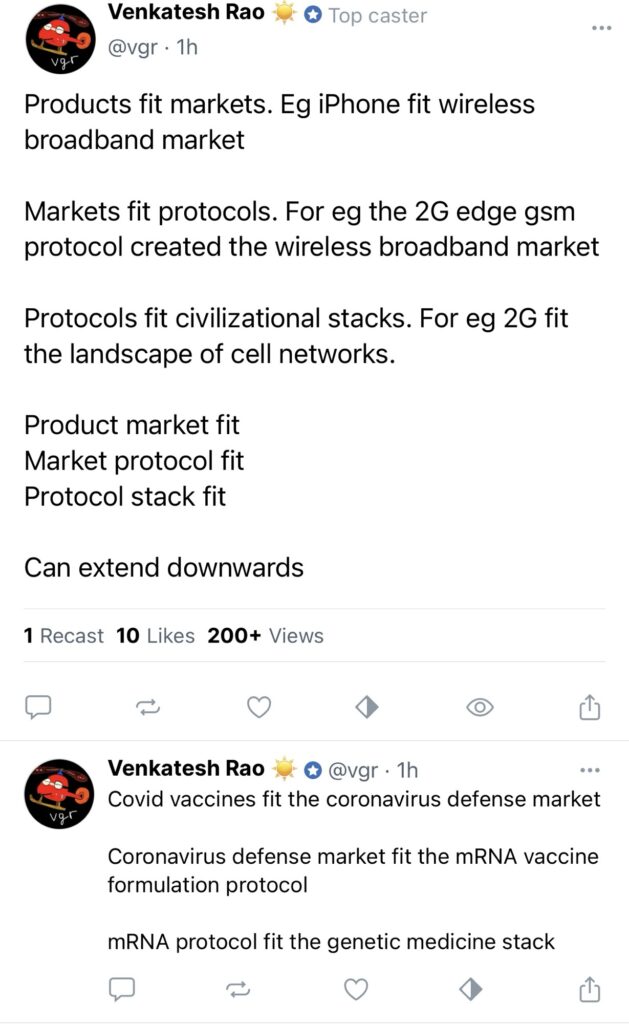At the most fundamental level lies the product-market fit. This is the tango between a solution and a problem. The sleek lines of the iPhone, for example, perfectly aligned with the burgeoning demand for a device that seamlessly integrated communication, entertainment, and internet access within a sleek, handheld package. The iPhone didn’t create the market, but it fit it like a glove, sparking a revolution in mobile technology.
However, products don’t exist in a vacuum. They rely on underlying structures to function. This is where market-protocol fit comes in. The 2G GSM protocol formed the invisible stage upon which the wireless broadband market danced. This protocol, with its ability to handle data transmission, provided the essential framework for the iPhone and countless other devices to flourish.
But protocols themselves are not born in isolation. They are the children of a larger technological and societal context – the protocol-stack fit. The 2G protocol thrived because it fit seamlessly into the existing cellular network infrastructure, a testament to decades of advancement in telephony. This infrastructure, in turn, was shaped by the needs and capabilities of a society increasingly reliant on mobile communication.
The story doesn’t end there. This framework can be extended downwards to reveal even deeper connections. The rapid development of COVID-19 vaccines exemplifies this. These vaccines addressed the desperate need for a coronavirus defense market that emerged in the face of a global pandemic.
But the success of these vaccines hinged on the mRNA vaccine formulation protocol. This groundbreaking technology, a product of years of research in the field of genetic medicine, provided the crucial tool to combat the virus. The mRNA protocol was a testament to the ever-evolving stack of knowledge in genetic manipulation, a field with the potential to revolutionize healthcare.
However, this intricate dance between innovation and infrastructure is fraught with challenges. The pressure to capitalize on a crisis, as seen in the rush to market for COVID-19 vaccines, can lead to ethical dilemmas and unforeseen consequences. The very technology that offers solutions can also create new threats, blurring the lines between defense and offense in the realm of biological warfare.
This multi-layered approach to understanding innovation allows us to see beyond the product itself. It reveals the intricate choreography between human ingenuity, technological infrastructure, and societal needs. As we look towards the future, acknowledging these interconnected layers is paramount. By understanding the complex ecosystem that fosters progress, we can strive to create innovations that not only solve problems but also contribute to a more secure and sustainable future.
